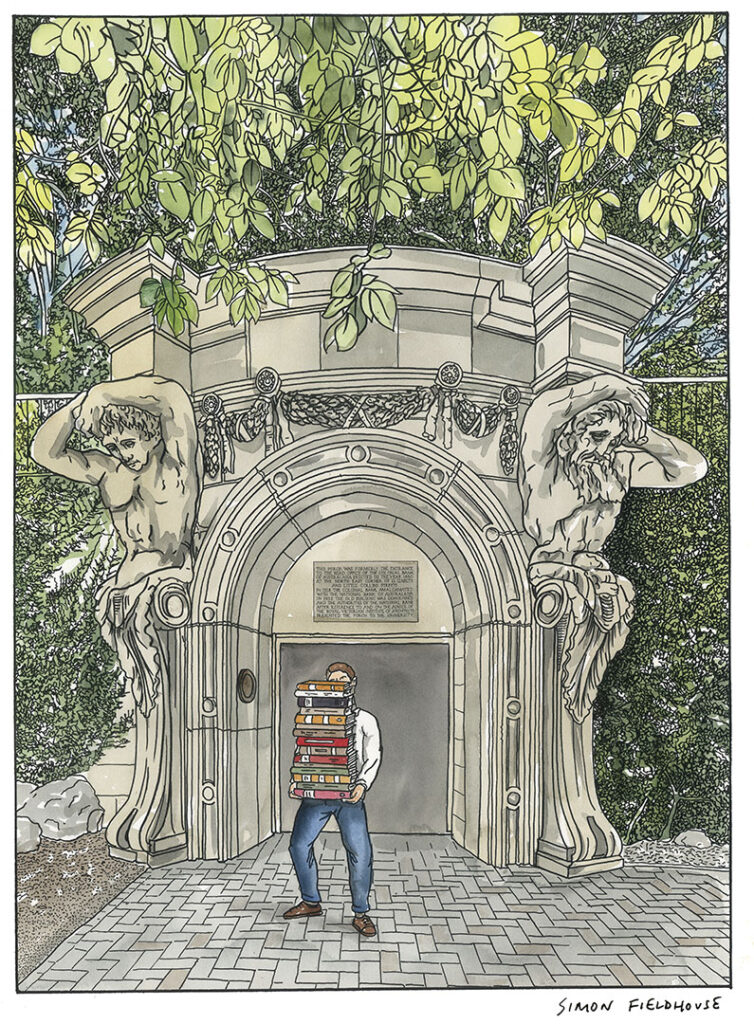
University of Melbourne (eastern car park entrance)
University of Melbourne (eastern car park entrance).Originally these Atlas figures supporting the doorway entrance were part of the Colonial Bank of Australia in Elizabeth Street, Melbourne and when it was demolished in 1932 they were gifted to the University of Melbourne. They were installed in their current position in 1972 and are now part of the Victorian Heritage Register.
Atlas figures, also known as atlantes or telamones, are sculptural supports in the form of male figures used to support architectural elements such as entablatures, balconies, or porches. They typically depict muscular, often bearded, men, sometimes shown in strained or dynamic poses, supporting a heavy load on their shoulders or heads.
The use of atlas figures in architecture has a long history, dating back to ancient Greek and Roman times, where they were often used to decorate temples, public buildings, and other grand structures. In these cultures, the figures were often associated with mythological heroes or titans who held up the heavens or the earth.
Atlas figures also have cultural significance in other parts of the world. In medieval Europe, they were sometimes used as supports for church portals and were believed to represent the twelve apostles or the prophets of the Old Testament. In Mesoamerican cultures, figures of gods and animals were used as architectural supports and symbolized the power of the ruling elite.
Today, atlas figures continue to be used in architecture as a decorative element, sometimes with contemporary twists. They have also become a popular motif in art and design, often used to convey strength, power, and endurance.